JOYCOME
interactive bird feeder
Bachelor Degree Project
Supervisor
Tyan-Yu Wu, Assistant Professor at Chang Gung University
May 2013 / Taoyuan, Taiwan
JOYCOME, a conceptually interactive bird feeder allows children and birds to interact in an interesting and progressive way to build a good relationship. Since children who live in cities lack interaction with nature, this project focuses on balancing the city and nature. When birds get closer to us, they also bring vitality to this apathetic city and reach the balance between the city and nature. In addition, parents and teachers are encouraged to teach or lead children to get close to animals which also builds a good relationship between them. Most importantly, we all share the city which makes the cityscape more varied.
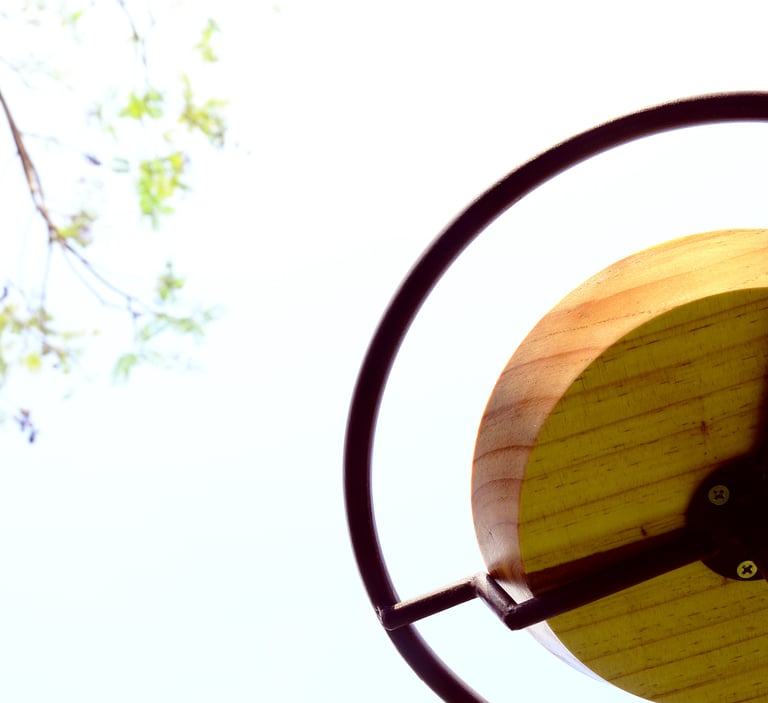





Kids nowadays are increasingly disconnected from the natural world, even as research shows that "thoughtful exposure of youngsters to nature can be a powerful form of therapy for attention-deficit disorder and other maladies." Instead of passing summer months hiking, swimming, and telling stories around the campfire, children these days are more likely to attend computer camps. As a result, they've come to think of nature as more of an abstraction than a reality.
Nature deficit disorder refers to a hypothesis by Richard Louv in his book "Last Child in the Woods" that human beings, especially children, are spending less time outdoors resulting in a wide range of behavioral problems. "The children and nature movement is fuelled by this fundamental idea: the child in nature is an endangered species, and the health of children and the health of the Earth are inseparable," said Richard Louv.
If we are able to interact with companion animals from childhood, the tendency to communicate and empathize with them appears to arise automatically. "Transference theory" is the basis of humane education: the idea that teaching children to care for and have compassion for animals will lead to greater compassion for and more humane attitudes towards all species, including humans. (Paul and Serpell, 1993; Paul, 2000).
But why do so many humans appear to have this tendency to want to interact with animals, forming emotional, companionable relationships with them? The answer almost certainly concerns human evolution. We are uniquely adapted to live in large, complex, and challenging social groups, in which forming affectionate bonds and alliances with others is critically important. Humans have also evolved to form intense bonds with their offspring, to guide them through the long journey to adulthood.
Based on the research, I think the migration of birds is much easier than other species. At the same time, compared to other animals, they are more sensitive to the environment. If they are willing to move to cities, this means the condition in the urban area is getting better and more friendly to them.
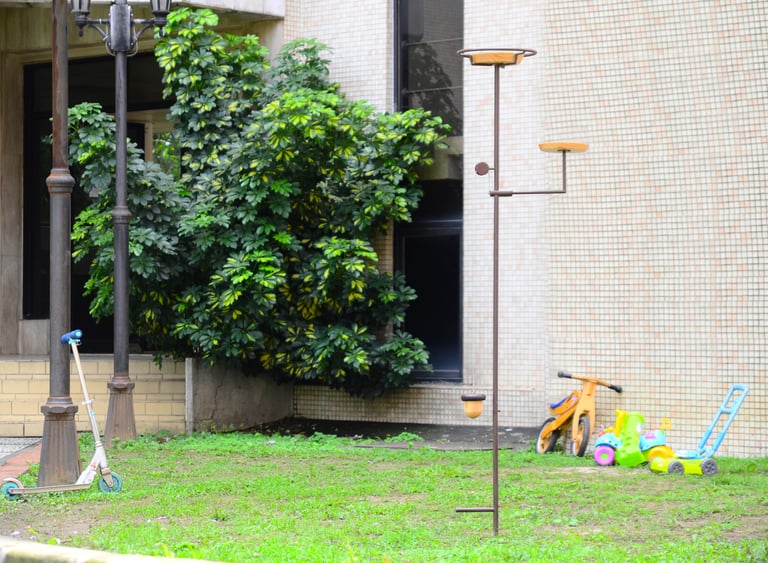

The concept is to convey the balance between the city and nature through being animal friendly. JOYCOME provides food and water for birds and is able to be put in any corner of the city such as parks, schools, or public areas. I believe their stay can bring vitality to cities.
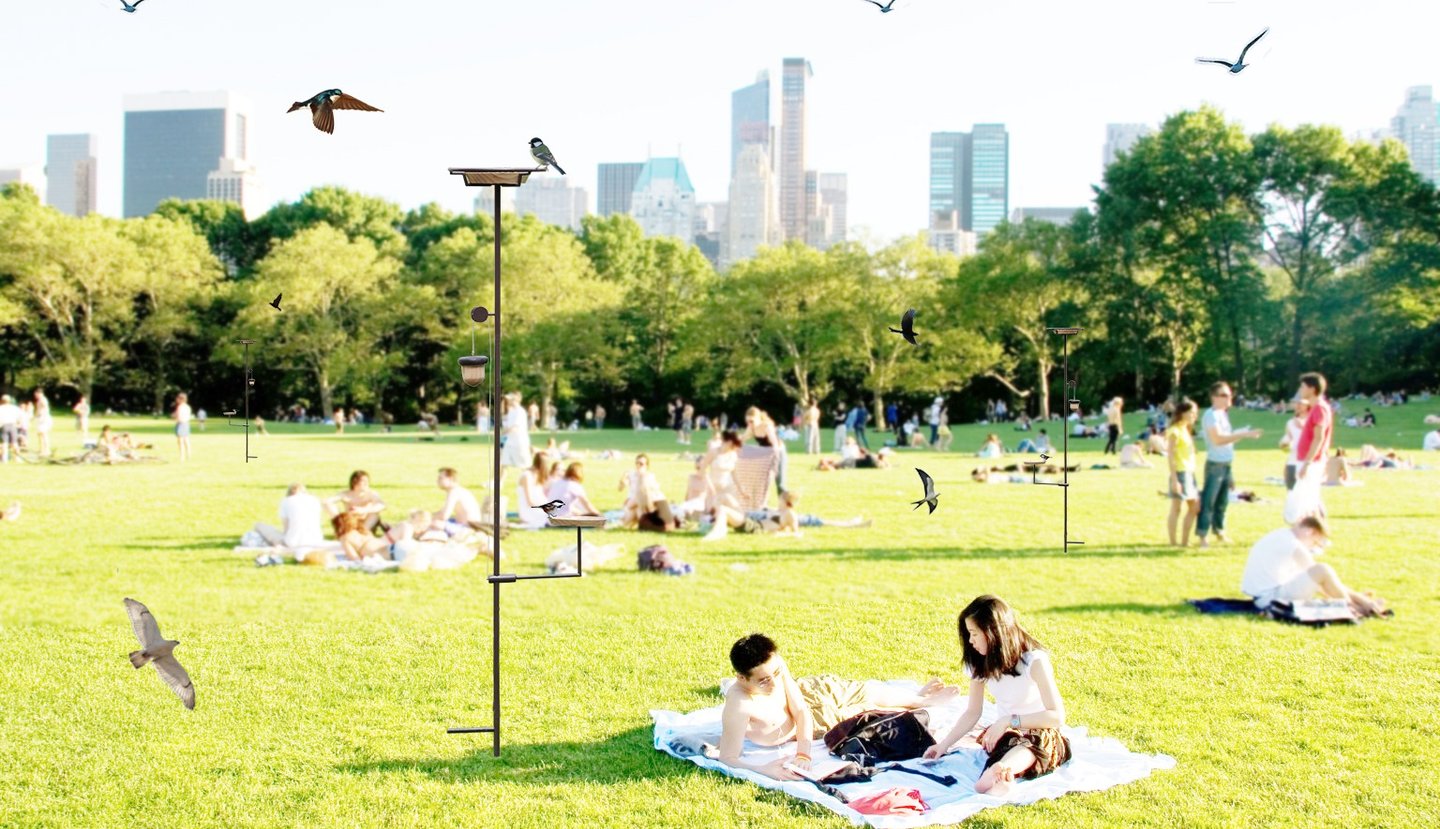

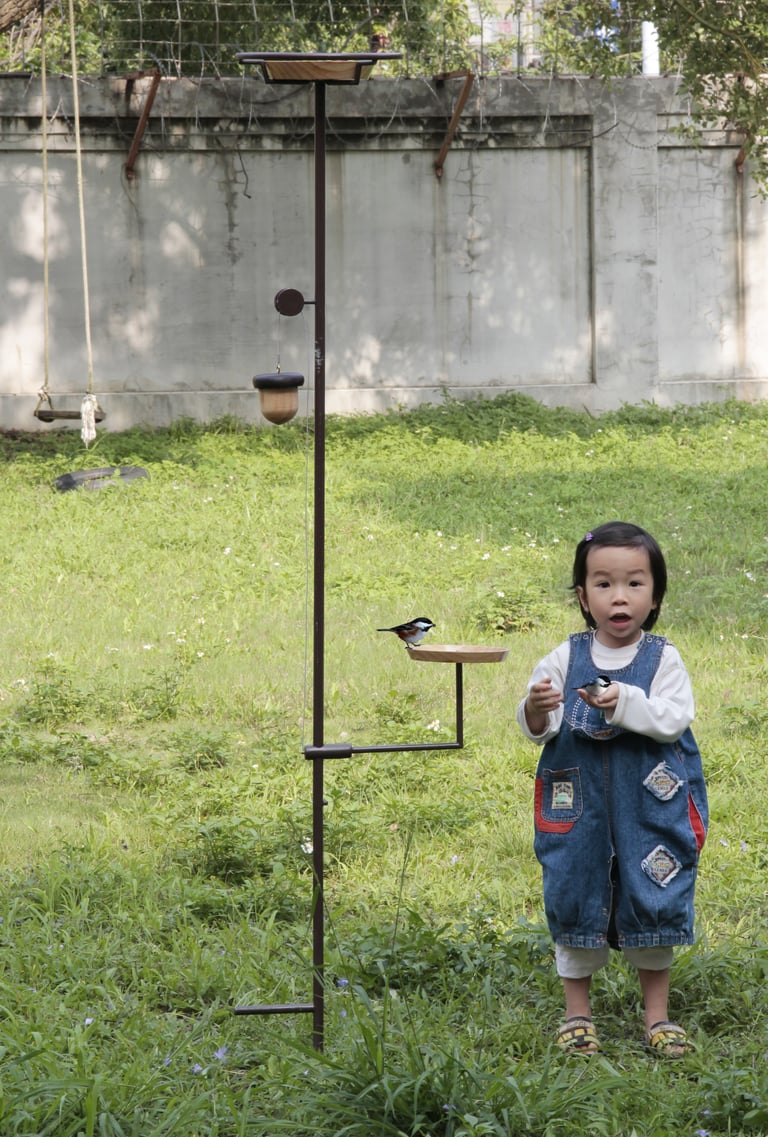

The way it is the bridge between us and animals is progressive and interactive. It is actually an experimental concept that uses a fixed pulley. When birds stand on the food plate, the weight is heavier than an acorn, food plate will go down and get closer to us, so that they can interact. On the other hand, if the bird flies away making the food plate lighter than an acorn, the food plate will go up and attract birds.
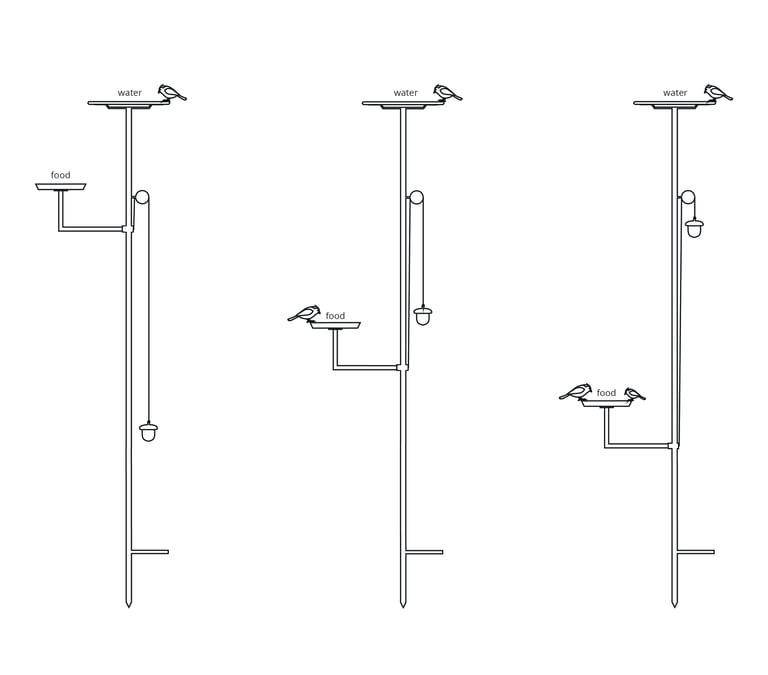

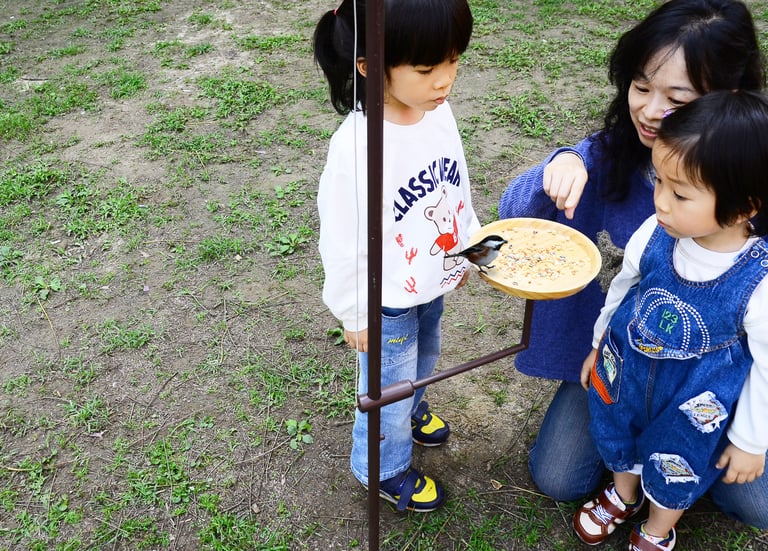


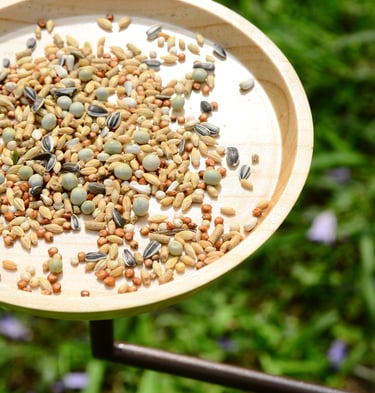
The interaction between humans and birds is totally open and is not an enforcement like cage. Birds can get close or fly away from us. It all depends on them. Apart from this, parents or teachers can teach children to observe, learn, and record, which also encourages parents accompany their children with educational meanings.
Exhibited at
Taiwan Young Desiner’s Exhibition 2013 May
City Yeast - Meet Taipei: Design 2013 July
